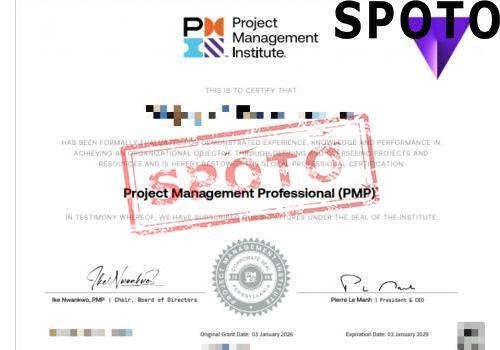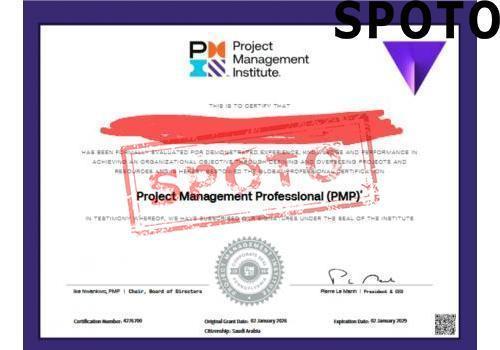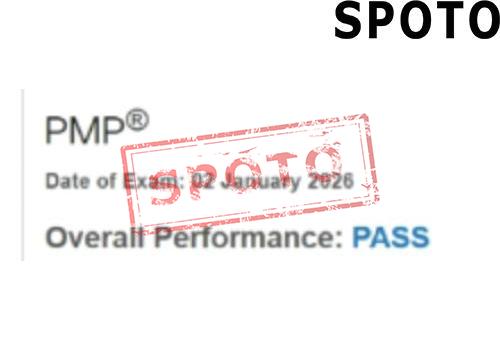
Table of Contents
- Introduction to Three-Point Estimating Technique
- Understanding the Pert Technique in Detail
- Step-by-Step Guide to Implementing Pert Technique
- Advantages of Using Three-Point Estimating Technique
- Real-world Examples of Pert Technique Implementation
- Challenges and Considerations in Using Pert Technique
- Conclusion
Introduction to Three-Point Estimating Technique
The Three-Point Estimating Technique, a fundamental aspect of project management, stands as a beacon of strategic planning, enabling project managers to derive a more realistic estimate of project timelines and budgets. Its core lies in evaluating three distinct scenarios: the optimistic (O), most likely (M), and pessimistic (P) estimates, which together form the backbone of the Pert (Program Evaluation and Review Technique) analysis.
This methodology not only crystallizes the path to a more accurate project scope but also encapsulates the essence of risk management by allowing for a comprehensive view of potential project timelines. In the dynamic realm of project management, the integration of the Three-Point Estimating Technique serves as a pivotal tool, ensuring that projects are not only planned with precision but are also adaptable to the unpredictable nature of real-world challenges.
Understanding the Pert Technique in Detail
One cannot fully grasp the concept of Three-Point Estimating without diving deep into the essence of the Program Evaluation and Review Technique, widely known as Pert. It stands as a crucial cornerstone in the field of project management, designed to simplify the process of planning and coordination of tasks. Establishing a comprehensive understanding of Pert is integral to utilizing the three-point estimating technique effectively.
What is the Program Evaluation and Review Technique (Pert)?
The unique technique of PERT works on the principle of integrating the time variable into project management. It essentially provides a graphical representation of a project's tasks and the timeline crucial to accomplishing each task. Furthermore, it highlights the dependencies between various tasks, ensuring a systematic workflow. Pert encompasses a unique method of setting expectations and monitoring project progress, significantly enhancing project estimation's overall accuracy.
Components of the Pert Method: A Three-Point Approach
The true uniqueness of the PERT method lies in its three-point approach to estimation. It primarily revolves around three key estimates - the Optimistic, the Most Likely, and the Pessimistic estimate. This approach does wonder to encapsulate the uncertainties associated with project activities.
-
Optimistic Estimate :
This is the best-case scenario, where everything goes according to plan without a hitch. It helps to sketch the minimum time required to complete a task under ideal conditions.
-
Most Likely Estimate :
This estimate is based on what is most probable under normal conditions. It is essentially the most realistic time frame to complete a task, considering likely delays and challenges.
-
Pessimistic Estimate :
This is the worst-case scenario, where everything that could potentially go wrong, does. This estimate accounts for unforeseen obstacles and hurdles, thus providing the longest time it would take to complete a task.
By sifting through these facets of the estimation, the PERT technique enables a more flexible and accurate prediction - a critical aspect of successful project management.
Step-by-Step Guide to Implementing Pert Technique
Embarking on the journey of mastering the Program Evaluation and Review Technique (PERT) within project management demands a meticulous approach, divided into three pivotal stages. Each stage serves as a building block, laying the foundation for an accurate and comprehensive project timeline estimation.
Identifying and Defining Project Activities
The inception of PERT's application commences with a thorough identification and definition of all the tasks required to complete a project. This initial phase is crucial, as it involves breaking down the project into manageable activities, ensuring no task is overlooked. It demands a granular analysis of the project's scope, enabling project managers to lay out a clear and structured blueprint of all necessary actions.
Assigning Estimates for Each Activity
- Optimistic Estimate (O): The least amount of time in which an activity can be completed, assuming everything progresses better than expected.
- Most Likely Estimate (M): The best guess based on experience, assuming everything goes as normal.
- Pessimistic Estimate (P): The maximum amount of time an activity might take, considering potential obstacles.
Assigning time estimates to each activity involves contemplation and foresight. It's a nuanced process where project managers must balance optimism with realism, preparing for the best while planning for the worst. This stage is pivotal for setting realistic expectations and timelines for project milestones.
Calculating the Pert Estimate
The calculation of the PERT estimate synthesizes the data collected in the previous steps, offering a weighted average that leans heavily on the most likely scenario but also considers the potential for both speedier completions and delays. The formula used is:
PERT Estimate = (O + 4M + P) / 6
This formula ensures that the final estimate is not just a midpoint between extremes but a considered evaluation that gives more weight to the most probable outcome. By integrating the optimistic, pessimistic, and most likely estimates, project managers can derive a more accurate projection of necessary time frames for each project activity.
Advantages of Using Three-Point Estimating Technique
The adoption of the three-point estimating technique in project management can provide significant benefits for project managers and their teams. Its two fundamental advantages are improved exactness in project estimation and efficient risk assessment and management.
Improved accuracy in project estimation
One of the standout benefits of using the PERT technique in project management is its ability to heighten the accuracy of project estimates. Unlike traditional estimation methods that rely solely on single-point estimates, this technique reduces the probabilities of making erroneous estimations by integrating three different views about the project – the Optimum, Most Likely, and Pessimistic views.
By incorporating these three perspectives, the PERT technique ensures that all possible scenarios are duly considered. This leads to more accurate estimations that contribute significantly to successful project outcomes. The thorough and comprehensive nature of this technique makes it a potent tool for enhancing the precision and reliability of project estimates.
Risk assessment and management
Besides improved estimation accuracy, the PERT technique is equally beneficial in managing project uncertainties and risks, key factors in the project management sphere. By examining the different potential scenarios (Optimum, Most Likely, and Pessimistic), PERT enables project managers to identify potential risks in each phase of a project, beforehand.
This proactive approach to risk assessment allows project teams to plan and prepare for potential risks, thereby reducing project obstacles and enhancing the chances of successful project completion. Moreover, the technique's focus on three different scenarios infers better risk management by assisting in the development of contingency plans and risk response strategies.
In conclusion, the three-point estimating technique is an invaluable tool for offering a more encompassing view of a project, enabling improved project estimation, and proactive risk management, two crucial components for successful project execution.
Real-world Examples of Pert Technique Implementation
The Three-Point Estimating Technique, or PERT, has seen widespread adoption across numerous sectors, offering illuminating insights into its practical utility. This section delves into case studies and distills lessons from diverse project environments, showcasing the technique's adaptability and impact.
Case Studies Demonstrating Successful Use of Pert Technique
A notable instance of PERT's application was in the development of a major software system for a global financial institution. The project, initially estimated at 12 months using traditional methods, was accurately completed in 10.5 months with the aid of PERT, enhancing both efficiency and stakeholder satisfaction. This success story underlines the method's prowess in refining estimation accuracy and streamlining project timelines.
Another exemplary case involved the construction of a commercial real estate development. By employing PERT, the project team could navigate through uncertainties inherent in large-scale construction, particularly with supplier delays and regulatory approvals. The technique enabled a more realistic schedule forecast, trimming the projected completion time by nearly 15%, a testament to its efficacy in managing complex, multifaceted projects.
Lessons Learned from Using Pert in Different Projects
-
Flexibility in Planning: PERT's emphasis on three distinct estimates fosters a flexible planning approach, accommodating unforeseen changes and challenges more effectively.
-
Enhanced Risk Management: Projects utilizing PERT benefit from an inherent risk assessment capability, allowing teams to identify potential pitfalls and adjust plans proactively.
-
Communication and Stakeholder Engagement: The transparency and detailed outlook provided by PERT facilitate clearer communication with stakeholders, ensuring expectations are aligned and managed throughout the project lifecycle.
In conclusion, the real-world application of the PERT technique underscores its value as a robust tool for project estimation and management. By incorporating the lessons learned from diverse project scenarios, managers can further optimize their strategies for success.
Challenges and Considerations in Using Pert Technique
The Three-Point Estimating Technique, while a powerful tool in project management, is not without its challenges and limitations. Understanding these hurdles is crucial for effectively leveraging the PERT method in your projects.
Potential Drawbacks and Limitations
One of the primary challenges of the PERT technique is its reliance on accurate estimations. Since the technique is predicated on three types of estimates (optimistic, pessimistic, and most likely), inaccuracies in these figures can skew the overall project timeline and budget. Additionally, the complexity of calculating the PERT estimate can be daunting for newcomers, potentially leading to errors in analysis. Another significant concern is the method's assumption of a normal distribution for activity durations, which may not always hold true, thereby affecting the accuracy of the estimated completion times.
Tips for Overcoming Challenges
- Enhance Estimation Accuracy: Involve team members with relevant experience in the estimation process to improve the accuracy of optimistic, pessimistic, and most likely estimates.
- Simplify Complexity: Utilize project management software equipped with PERT calculators to simplify the computation process and reduce the risk of manual errors.
- Regular Review and Adjustment: Continuously monitor project progress and compare it against the PERT estimates. Adjust your project plan as needed to reflect actual progress and insights gained over time.
- Education and Training: Provide training sessions for project managers and team members on the PERT technique, focusing on its application, benefits, and how to address common pitfalls.
- Combination with Other Techniques: Integrate PERT with other project management methodologies, such as Critical Path Method (CPM) or Agile, to complement its strengths and mitigate its limitations.
By acknowledging and addressing these challenges, project managers can more effectively implement the PERT technique, ensuring more accurate project estimates and better overall project management outcomes.
Conclusion
In summing up the discourse on the Three-Point Estimating Technique, or Pert as it is more commonly known, we have traversed the spectrum from its foundational principles to its pragmatic application within the realm of project management. This technique, celebrated for its trifecta of estimates—optimistic, most likely, and pessimistic—offers a more nuanced and comprehensive view of project timelines and budgets.
The incorporation of Pert into project management not only elevates the accuracy of project estimations but also enriches the decision-making process by incorporating risk assessment and management into the core of planning. It is this multidimensional approach to estimation that sets Pert apart, enabling project managers to navigate the often turbulent waters of project execution with greater confidence and foresight.
Advocacy for Pert Integration
We advocate for a strategic embrace of the Pert technique by project management professionals. The empirical evidence, gleaned from a myriad of successful implementations across diverse projects, underscores Pert's utility in not only enhancing project outcome predictability but also in fostering a culture of analytical and strategic thinking within project teams.
As we close this exploration, it is our fervent hope that project managers will perceive the Pert technique not as a mere tool but as an indispensable ally in their quest for project success. By weaving Pert into the fabric of project estimation strategies, project leaders can illuminate paths through complexity with precision, thereby transforming potential challenges into opportunities for innovation and growth.










